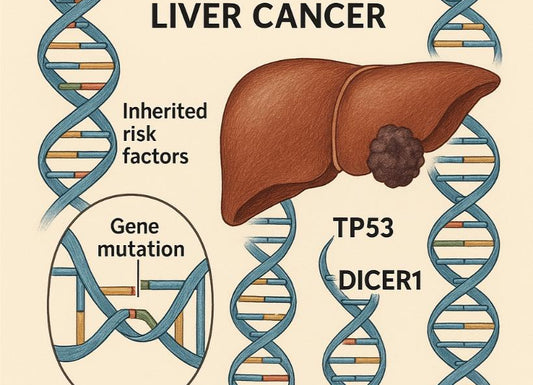Urobilinogen Low in Your Urine: What It Means for Your Health
 Written By
Yusela Aquino
Written By
Yusela Aquino

Urobilinogen is a substance made when bacteria in your gut break down bilirubin, a pigment released when old red blood cells are broken down. It helps give urine its yellow color and stool its brown color. Normally, some urobilinogen is absorbed into the bloodstream and removed by the kidneys, while the rest is passed out in stool.
If urobilinogen levels in urine are very low or missing, it could mean there’s a problem with bile flow (such as a blocked bile duct), severe liver disease, or, in rare cases, an issue with gut bacteria. Catching these changes early can help diagnose and manage liver and bile-related health problems.
Normal Urobilinogen Levels in Urine: What’s Considered Healthy?
Urobilinogen is typically present in urine in small amounts. The standard reference range falls between 0.2 to 1.0 mg/dL. Deviations outside this range can be indicative of various health concerns:
|
Urobilinogen Level |
Possible Interpretation |
|
0 mg/dL (Absent) |
Biliary obstruction or severe liver disease |
|
<0.2 mg/dL (Low) |
Potential bile flow impairment or gut microbiome disruption |
|
0.2 - 1.0 mg/dL (Normal) |
Healthy liver and bile function |
|
>1.0 mg/dL (High) |
Possible hemolysis or liver dysfunction |
A urine dipstick test is a quick, non-invasive way to assess urobilinogen levels. While it doesn’t provide a definitive diagnosis, it can serve as an early warning sign prompting further evaluation.
Why Testing for Urobilinogen Matters

Assessing urobilinogen levels offers valuable insight into liver and biliary function. Unlike standard liver function tests that measure enzyme activity, urobilinogen testing reflects how well bilirubin is processed and excreted. Low levels may suggest impaired bile production, liver disease, or disruptions in gut microbiota—factors that can significantly impact overall health.
Causes of Low Urobilinogen Levels in Urine
Several conditions can contribute to reduced urobilinogen levels, including:
- Biliary obstruction – Blocked bile ducts prevent bilirubin from reaching the intestines, halting urobilinogen production.
- Liver dysfunction – Conditions such as cirrhosis, hepatitis, or liver failure may impair bilirubin metabolism.
- Antibiotic use – Disrupting gut bacteria can hinder the conversion of bilirubin to urobilinogen.
- Chronic constipation – A sluggish digestive system may indirectly alter bilirubin processing.
Biliary Obstruction and Its Impact on Urobilinogen Levels
A biliary obstruction occurs when bile flow is restricted due to gallstones, tumors, or inflammation. Without bile reaching the intestines, bilirubin is not converted into urobilinogen, leading to an absence of this compound in urine.
Diagnostic tools such as ultrasound, MRCP (magnetic resonance cholangiopancreatography), or endoscopic procedures help identify blockages. Treatment options may involve bile duct stents, surgery, or medications to restore normal bile flow.
Symptoms Associated with Low Urobilinogen

When urobilinogen levels drop, the body may exhibit signs of compromised bile or liver function, including:
- Pale or clay-colored stools – A sign of reduced bile pigment reaching the intestines.
- Dark urine – Often due to excess bilirubin in the bloodstream, which is filtered out by the kidneys.
- Jaundice – Yellowing of the skin and eyes from impaired bilirubin processing.
- Digestive discomfort, fatigue, and right-sided abdominal pain – Possible symptoms of liver or bile duct conditions, depending on the cause.
How to Interpret a Low Urobilinogen Urine Test
If a urine test shows low or absent urobilinogen, further medical evaluation is needed to determine the underlying cause. Physicians may order:
- Liver function tests (LFTs) – Measures enzyme levels (e.g., ALT, AST, ALP) and bilirubin to assess liver health.
- Bilirubin tests – Helps evaluate bilirubin metabolism and detect liver or bile duct issues.
- Imaging scans (Ultrasound, MRI, or CT scan) – Used to check for bile duct obstructions, liver abnormalities, or gallbladder issues.
Treatment Options for Low Urobilinogen Levels
Since low urobilinogen levels typically indicate an underlying liver, bile duct, or gut issue, treatment focuses on addressing the root cause:
- Biliary Interventions – Endoscopic or surgical procedures (e.g., stenting, ERCP, or surgery) may be needed to resolve bile duct blockages caused by gallstones, strictures, or tumors.
- Liver Disease Management – Treatment depends on the specific condition (e.g., antiviral therapy for hepatitis, lifestyle changes for fatty liver, or medications for cirrhosis). In advanced cases, liver transplantation may be required.
- Gut Health Support – A fiber-rich diet and prebiotics can promote healthy gut bacteria, supporting bilirubin metabolism. Probiotics may be beneficial, but evidence on their direct impact on urobilinogen levels is limited.
If low urobilinogen is detected, consulting a healthcare provider for proper diagnosis and treatment is crucial.
What If Urobilinogen Is Completely Absent?
A total absence of urobilinogen in urine warrants further investigation, as it may indicate severe bile duct obstruction or advanced liver disease. In such cases, a physician may recommend additional blood work, imaging, or specialized tests to pinpoint the underlying issue.
Testing for Urobilinogen at Home: A Proactive Approach

At-home urine tests, such as Ribbon Checkup’s at-home urine test kit, provide an accessible way to monitor urobilinogen levels. These tests deliver quick, accurate results, allowing users to detect potential liver or biliary issues before symptoms progress.
Early detection is key to preventing severe liver damage. Testing regularly with an at-home kit can offer peace of mind and facilitate proactive healthcare decisions.
Final Thoughts: Why Monitoring Urobilinogen Matters
Low urobilinogen levels in urine can serve as an early indicator of liver or biliary dysfunction. Regular monitoring, whether through routine urinalysis or at-home testing kits like Ribbon Checkup, will help you take charge of your health.
By identifying abnormalities early, you can work with healthcare providers to address potential concerns before they escalate. Take a proactive approach to liver health—because early detection can make all the difference.
References
Chindarkar, N. S., Rentmeester, L. L., Ly, B. T., & Fitzgerald, R. L. (2014). Black urine due to urobilinogen in a patient with alcoholic pellagra. Clinical Biochemistry, 47(12), 1132–1135. https://doi.org/10.1016/j.clinbiochem.2014.03.016
Hall, B., Levy, S., Dufault-Thompson, K., Ndjite, G. M., Weiss, A., Braccia, D., Jenkins, C., Yang, Y., Arp, G., Abeysinghe, S., Jermain, M., Wu, C. H., & Jiang, X. (2023). Discovery of the gut microbial enzyme responsible for bilirubin reduction to urobilinogen. bioRxiv (Cold Spring Harbor Laboratory). https://doi.org/10.1101/2023.02.07.527579
Lala, V., Zubair, M., & Minter, D. A. (2023, July 30). Liver function tests. StatPearls - NCBI Bookshelf. https://www.ncbi.nlm.nih.gov/books/NBK482489/
National Library of Medicine. (n.d.). Fatty liver disease. MedlinePlus. https://medlineplus.gov/fattyliverdisease.html
Treatment for cirrhosis. (2024, December 13). National Institute of Diabetes and Digestive and Kidney Diseases. https://www.niddk.nih.gov/health-information/liver-disease/cirrhosis/treatment
Urobilinogen in urine. (n.d.). https://medlineplus.gov/lab-tests/urobilinogen-in-urine/

Yusela is a medical student with a degree in Biology and a strong foundation in health communication. With experience in both research and clinical settings, she writes clear, evidence-informed content to help patients and caregivers better understand liver health, chronic disease, and transplant care.



